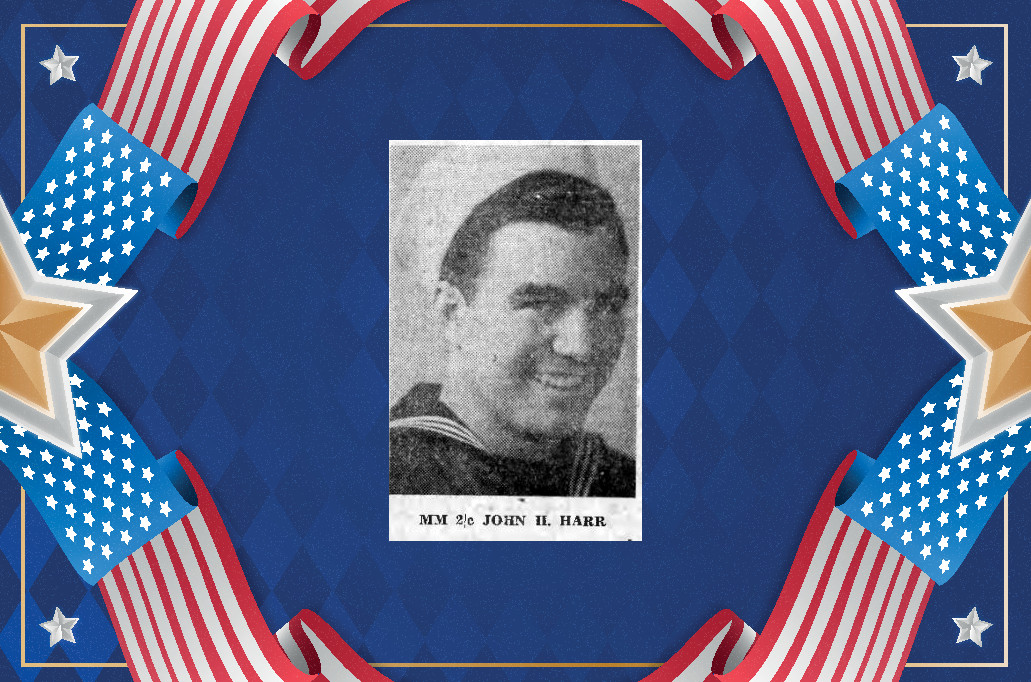By Deborah Larsen

John Harrison Harr
John Harrison Harr was born in Traverse City, Michigan, on June 1, 1920, the son of Ernest and Ida Canfield Harr. He attended Traverse City High School and played football on the school’s 1937 championship team. He graduated from Traverse City High in the class of 1938 and attended college for one year. In 1940, John was living in Rochester, Michigan, where his older sister Louise also lived, and was working at Yellow Coach & Truck in Pontiac.
John enlisted in the U.S. Navy on December 5, 1941. After training as an aviation machinist’s mate and gunner, he was assigned to Bombing Squadron 102, based in Hawaii. His squadron moved to Guadalcanal in the Solomon Islands in early 1943. The squadron flew the PB4Y-1 Liberator, the Navy version of the B-24.
On July 17, 1943, John Harr was a crew member aboard a PB4Y-1 that took off on a mission to bomb the Japanese-controlled Buin airfield on Bougainville Island, Papua New Guinea. The crew hit their target successfully, but as they were returning to base they were shot down by Japanese fighters. John’s airplane was last observed falling into the ocean, and searchers found no sign of the airplane or any survivors. John and the rest of his crew were declared missing, and their families at home were notified that they were all presumed lost.
“John Harr was one of the most popular men in our squadron,” his commander wrote to John’s parents in a letter of condolence. “He was engaged in a dangerous mission for his country and it is certain that he met his fate with courage and fortitude.”
John Harrison Harr was officially declared dead on January 7, 1946, and was posthumously awarded the Purple Heart. His remains were declared unaccounted for, and he was memorialized on the Tablets of the Missing at the Manila American Cemetery in the Philippines.
